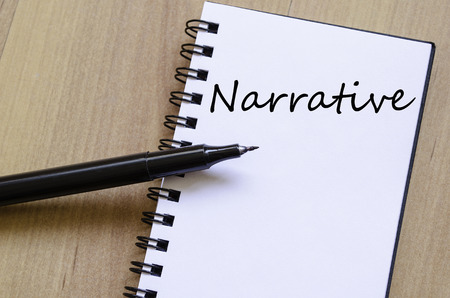
Copyright: eenevski / 123RF Stock Photo
Are you sitting comfortably…then we’ll begin.
You’ll recognise this sentence as the opening to most of your favourite stories. These familiar words let you know you’re about to be told (or read) something wonderful where you can get immersed in the words, and paint pictures of what’s happening in your mind.
That’s what stories do. They help you visualise things and make them real. They capture your emotions and make you laugh and cry – often at the same time. There’s not much else you can think of that you can say that about.
We’re talking about stories because to have an effective strategic narrative for your organisation, you need to know what its story is. And be able to tell it in a way that’ll engage and relate to people.
A strategy is a plan of action at a certain point in time, whereas a strategic narrative is the journey the business is on, so think about the journey your organisation needs to go on to get where you need to. It needs to be authentic and believable, so stick to the truth and don’t shy away from telling it how it is even if that sometimes involves negatives.
To start, try asking yourself these three questions: Where is your organisation now? Where do you want it to get to? How do we get there? This is your journey.
The journey need to be something achievable, so avoid setting grandiose plans no-one in your organisation will think are realistic. The most effective journeys allow for – and even encourage – people to learn and adapt as they go along without straying too far from the final destination.
Try coming up with words and phrases you think reflect your narrative. Once you’ve filled a sheet of paper, edit down to about half the size getting rid of anything that doesn’t stand for who you are, or repeats something in a different way.
Other things to think about are the length of your narrative. Not too short to get your message across, but not too long to put people off reading it. Brevity is definitely key though, so be as concise as you can.
Then build your narrative around the words and phrases remembering to include a beginning, a middle and an end. Not a complete end of course as your story’s still ongoing, but one that’s to be continued.
The value of a strong strategic narrative can’t be underestimated. It will help people get behind a common goal and join together separate initiatives so people know what they’re working towards. You can also use the narrative to challenge people within your organisation so they don’t just adopt a ‘that’s just the way we do things’ approach. At the very least, this will get people talking about the narrative.
And getting people to talk is really the key to it all. Your narrative needs to take them along for the ride, and let them know why they’re being asked to do something, especially if it’s different or a change. Getting them involved at an early stage will avoid the ‘What’s the point of doing this?’ everyone dreads hearing. They might not agree with what you’re doing, but at least they’ll know why you’re doing it.
Understand what your strategic narrative is for your organisation, and how to communicate it, and you’ll all live happily ever after.







